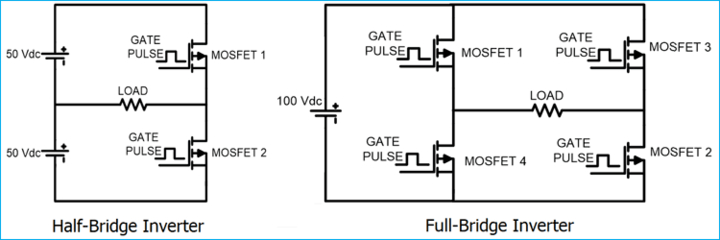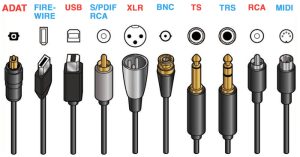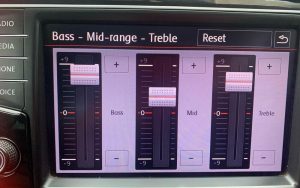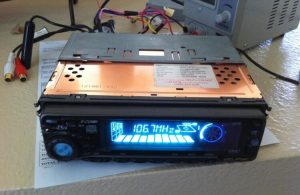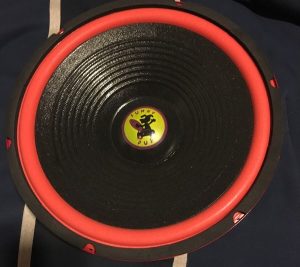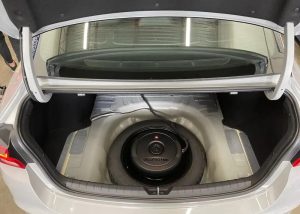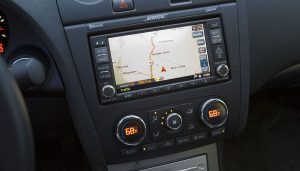When it comes to creating an immersive audio experience in your vehicle, choosing the right amplifier is pivotal. The market offers a myriad of options, each with its unique configuration and capabilities. Among these, the half bridge and full bridge amplifiers stand out, each catering to distinct audio needs. In this comprehensive guide, we’ll delve deeper into half bridge vs full bridge amplifiers, helping you make an informed decision for your car stereo system.
Contents
Differentiate Table
To kick off our exploration, let’s begin with a side-by-side comparison to highlight the key features that differentiate half bridge and full bridge amplifiers:
| Feature | Half Bridge Amplifier | Full Bridge Amplifier |
| Power Output | Moderate | High |
| Efficiency | Good | Very High |
| Size and Weight | Compact | Larger |
| Cost | Affordable | Expensive |
| Suitability for Car Stereo | Suitable | Ideal |
Understanding Half Bridge Amplifiers
Definition and Operation: A half bridge amplifier operates by placing the load between two active switches. In simpler terms, it utilizes a pair of transistors, where one turns on while the other turns off, generating an alternating current. This straightforward design makes half bridge amplifiers popular choices for car audio systems.
Power Output and Efficiency: Half bridge amplifiers typically offer a moderate power output. While they are efficient, their performance may not match that of full bridge amplifiers, especially in high-demand audio setups. For users with standard car audio needs, a half bridge amplifier may offer a good balance between power and efficiency.
Pros and Cons:
Pros
Cost-effective: Half bridge amplifiers are generally more budget-friendly, making them an attractive option for those looking to enhance their car audio without breaking the bank.
Suitable for moderate power requirements: If you have a standard car audio setup and don’t require exceptionally high power, a half bridge amplifier can meet your needs.
Compact and lightweight design: The simplicity of the design translates into a more compact and lighter amplifier, which can be advantageous in vehicles where space is limited.
Cons
May struggle in high-power applications: For users seeking a powerhouse audio setup, a half bridge amplifier might show limitations when pushed to its maximum capacity.
Delving into Full Bridge Amplifiers
Definition and Operation: A full bridge amplifier configuration, on the other hand, involves placing the load in the center of four active switches. This intricate setup allows for a more robust and efficient power delivery, making full bridge amplifiers the preferred choice for high-performance audio systems.
Power Output and Efficiency: Full bridge amplifiers excel in power output and efficiency. Their ability to deliver higher wattages with greater stability makes them ideal for demanding audio setups. If you’re an audiophile looking to push the boundaries of your car audio experience, a full bridge amplifier might be the answer.
Pros and Cons:
Pros
High power output capability: Full bridge amplifiers can deliver substantial wattage, providing the extra punch needed for a more immersive audio experience.
Very efficient, minimizing power loss: The intricate design of full bridge amplifiers contributes to their high efficiency, ensuring minimal power loss during operation.
Well-suited for demanding audio applications: If you have a high-performance car audio system with demanding requirements, a full bridge amplifier can meet and exceed your expectations.
Cons
Generally more expensive: The advanced technology and capabilities of full bridge amplifiers often come at a higher cost, making them a premium choice.
Larger and heavier: The additional components and complexity of full bridge amplifiers result in a larger and heavier build compared to their half bridge counterparts.
Analyzing Key Differences
Power Output Comparison
The power output is a critical factor when selecting an amplifier, especially for those who crave a potent audio setup. Half bridge amplifiers provide moderate power, suitable for standard car audio needs. In contrast, full bridge amplifiers shine in this department, offering high power output capabilities that can cater to the demands of even the most sophisticated audio systems.
Efficiency Battle
Efficiency is key for minimizing power loss and ensuring optimal performance. Full bridge amplifiers outshine half bridge counterparts in this aspect. The intricate design of full bridge amplifiers allows for efficient power delivery, making them the go-to choice for those who prioritize performance without compromise.
Size and Weight Considerations
If space and weight are crucial considerations for your car stereo system, a half bridge amplifier might be the more suitable option. The simplicity of the design results in a more compact and lighter amplifier. On the other hand, if you have the space and are prioritizing power, a full bridge amplifier is worth the extra size and weight, offering unmatched capabilities for those willing to accommodate a larger unit.
Cost Comparison
Budget considerations are always at the forefront of decision-making. Half bridge amplifiers are generally more affordable, making them an attractive choice for those looking for a cost-effective solution without compromising too much on performance. Full bridge amplifiers, with their advanced technology and capabilities, tend to come with a higher price tag, making them a premium option for audiophiles seeking the best possible audio experience.
Suitability for Car Stereo Systems
For a typical car stereo system, both half bridge and full bridge amplifiers can perform admirably. The choice boils down to your specific requirements and preferences. If you’re looking to upgrade your car audio without breaking the bank and have moderate power needs, a half bridge amplifier might be the perfect fit. However, if you’re pushing the limits of audio performance in your vehicle and seek the utmost in power and efficiency, a full bridge amplifier could be the key to unlocking an unparalleled car audio experience.
Real-World Application: My Experience
Personal Encounter with Half Bridge
In my quest to enhance the audio experience in my vehicle, I opted for a half bridge amplifier to test its performance. The installation was smooth, and I immediately noticed an improvement in the clarity and depth of the audio. For everyday driving and casual listening, the half bridge amplifier proved to be more than sufficient. However, as I started pushing the volume to higher levels and experimenting with bass-heavy tracks, I began to notice some limitations.
The amplifier showed signs of strain, and the audio quality started to degrade at the upper limits of its capacity. While it performed admirably for standard car audio needs, it struggled to keep up with the demands of more intensive audio setups. This experience led me to consider the possibility of upgrading to a full bridge amplifier to see if it could deliver the power and performance I craved.
Real-world Experimentation with Full Bridge
Curious to explore the difference, I decided to experiment with a full bridge amplifier. The setup process was more involved due to the additional components, but the results were nothing short of impressive. The full bridge amplifier delivered a noticeable boost in power, allowing me to crank up the volume without sacrificing audio quality. Even with demanding audio tracks and bass-heavy beats, the full bridge amplifier maintained its composure, providing a truly immersive audio experience.
The efficiency of the full bridge amplifier was evident in its ability to handle high-power demands without showing signs of strain or distortion. The audio remained clear, detailed, and powerful, exceeding the capabilities of the half bridge amplifier, especially in challenging audio scenarios.
Conclusion
In the half bridge vs. full bridge amplifier debate, the choice ultimately depends on your specific requirements, preferences, and budget. For a standard car stereo system where space, budget, and power needs are moderate, a half bridge amplifier may suffice, offering a good balance between performance and affordability.
However, if you’re an audiophile seeking the utmost in power, efficiency, and overall audio performance, especially for high-performance audio setups, investing in a full bridge amplifier might be the key to unlocking an unparalleled car audio experience.
Consider your priorities, assess your audio needs, and choose wisely to bring your car stereo to life with the amplifier that aligns with your unique preferences. Whether you opt for the simplicity and affordability of a half bridge amplifier or the powerhouse performance of a full bridge amplifier, the choice is yours, and the journey to an enhanced audio experience in your vehicle awaits.
